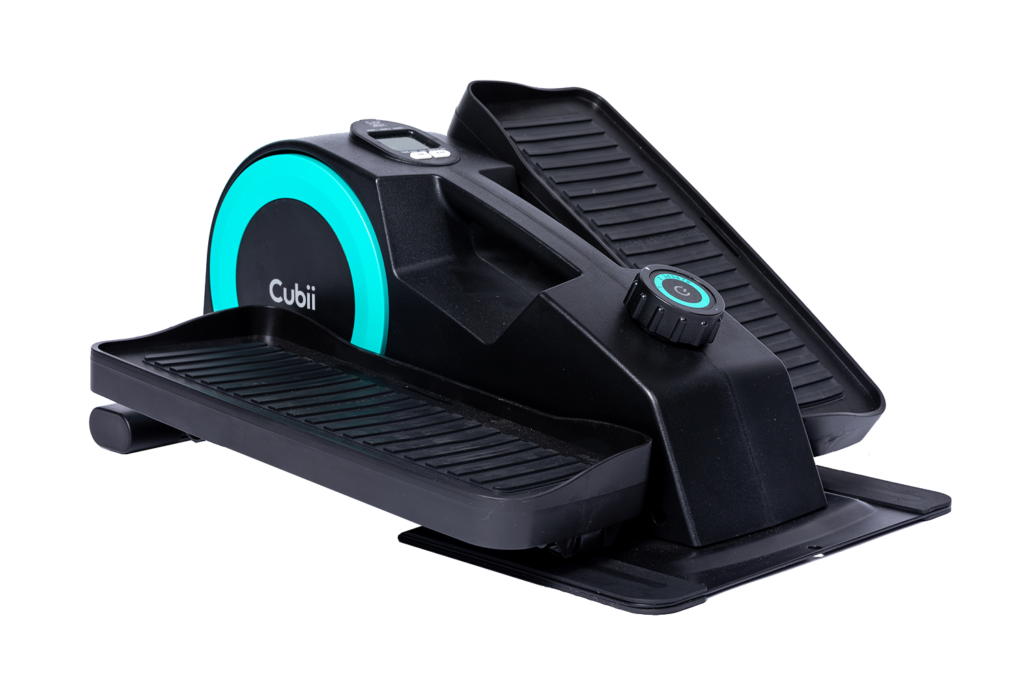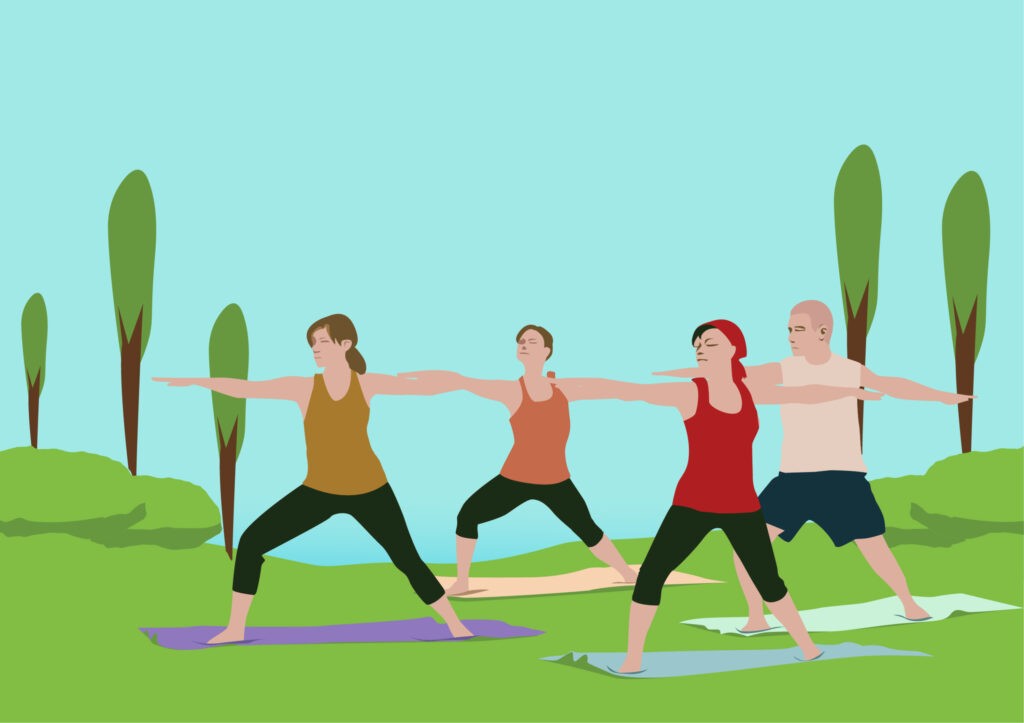It’s no great secret that I was diagnosed with Fibromyalgia many years ago. It took many years to get the diagnosis, and it’s been many years since and I’m still learning ways to try and manage my symptoms. I’ve been trying the past couple of years to find ways to add some exercise into my day to day, but not push myself too hard at any given time. So today I want to talk about things I’ve found have been helpful to getting me some measure of exercise in, and what I’ve been doing to slowly yet surely increase what I can do.
Exercise while seated:
Since I love to write, and I do spend a fair bit of time either reading, writing, or watching videos at my computer desk. I’ve taken to finding ways I can exercise while sitting here at it. That includes using an under desk elliptical that has Bluetooth so my phone can keep track of the progress I’m making. I even take it over to the living room when my husband and I are watching a show together, so I can get in a few minutes here and there. You’ll want one with the ability to change the resistance, as some days you’ll need less and some days you can push yourself a bit more. Moving is the goal, even if other symptoms make getting up for a long walk feel nearly impossible. I love having an under desk elliptical, and even though my husband isn’t chronically ill he uses it too. I love that I can sit more comfortably and still work out by using what I have to still work on my overall health.
I’ve also found that seated exercises, those that are designed for seniors, often are helpful for me as well. Yes, I had to get past the mental pushback of “I’m not a senior! I should be able to do ‘normal’ things!” but that’s just not the case with this condition for many people. One exercise I try and do in my chair is a modified “jumping jack”, I usually start with my arms first. Just doing the arm movements 20-30 times, less on really bad pain days, and then doing the leg movements. Granted, you don’t need to do the leg movements if you’re using an under desk elliptical, as you can get enough of a leg workout that way. There are days where I try and push myself to do both, and days I’ll just do the elliptical and call it good along with doing the arm movements after. Since I have problems with my balance and coordination, doing normal jumping jacks hasn’t worked for me in years. So I had a modified way I did them standing before, and now I’m happy to have a way to do something similar while seated.

Under Desk Elliptical by Cubii
Enjoy a walk
Now, if you live in a place with cold weather much of the year like I do, this one can be really hard. With Fibromyalgia you likely also have an increased sensitivity to cold, and winter days can be especially hard, even if you try and minimize your exposure to the weather. The fresh air is great when the weather is good, but you can also find walking programs to do in the comfort of your own home. If they don’t work, just take walks around your house for a bit. Set a timer for a few minutes if you need to, maybe you’ll have the energy to clean off the kitchen counters, gather a load of laundry, or something else small. Rest for a bit, say 20-30 minutes if you need to, then get up with the same timer and either continue with the task you started, or find a new one. I use this as a way to move, even just walking, while getting some of the chores that all too easily fall to the way side worked on. You can also get a fold up treadmill if you’re low on space, or a full sized one if you have the space and feel the cost is within your means.
Take it easy
One thing that can take a bit to learn is knowing when enough is enough, and finding what you can do and slowly building on it. Fibromyalgia is really rough, and often trying something new makes it very easy to push too hard. Even if you’re doing seated senior designed exercises, yoga, Tai Chi, an under desk elliptical, or something more intense like walking, running, dancing, or strength training, you’ll want to build up your activity levels slowly over time. While many people without the condition can increase their exercise routines by 5, 10, even 20 minutes each week as they build their muscles, with Fibromyalgia you’ll want to go even slower than that. Those of us with the condition very easily end up having post-exertional malaise, and pushing yourself too fast to increase your activity can cause that to happen way too much. I’ve been there, done that. I once tried to jump from not doing much in the way of exercise, to doing an entire 25 minute ‘beginners yoga’ video on YouTube. I ended up spending four days hardly able to function I was so exhausted and sore. The day right after I did it I barely could manage to get out of bed to get to the bathroom I hurt so badly. So I’ve had to really learn to pace myself over the years and realize I cannot do what I used to be able to do without some heavy consequences.
Stretch, gently!
One that I and many others with Fibromyalgia suffer with is tension. I have a lot of tension in my neck, shoulders, and upper back, and it can make all sorts of things difficult to work through. I work on doing gentle stretches of my neck and shoulders either as I’m using my under desk elliptical, taking a shower, and when I’m heading to bed. Any time I can remember when I have a moment and notice how tense and sore things are I find a way to work in some very gentle stretches. It helps to remember not to stretch your muscles when they’re too cold, that’s why I’ll do them when I’m either doing some other sort of exercise (or in between, so I’m a bit more warmed up), warmed up in the shower, or as I’m trying to wind down for the night. I have things I have to do before bed, so I’ve been having to walk around and use my muscles anyway, so they’re nice and ‘warmed up’ at least in my mind, so I can give them a gentle stretch before laying down for the night.

Stretching – image from Stockvault.net – though the work is from https://totalshape.com/
Make gradual dietary changes
I know, food can be hard. You’re tired, your sore, you have brain fog. Thinking of food is exhausting and another thing in a long list of things that make the day difficult. It’s so easy for me to reach for easy snack foods because they’re there. It’s a good idea to have easy snack foods that are also healthy hanging around. Pre-sliced apples, baby carrots, multi-grain cheerios you can pour in a bowl instead of chips, a protein bar, instant breakfast you can put in your coffee instead of just milk/creamer to get some extra nutrition in. Those are things I use to try and help me at least get something healthier than junk food when I am feeling snacky but I’m trying to avoid the Flamin’ Hot Cheetos or Oreos in the cabinet that are just so easy to grab but ultimately wont help in my journey to be at least somewhat healthier.
What do you think?
What do you use to help you exercise and be healthier while still taking your Fibromyalgia symptoms into consideration? Do you use specific equipment or supplies like an under desk elliptical, fold up treadmill, resistance bands, weights, or dvds and videos? I’d love to hear from you on what changes you’ve made to your activity levels to help you try and feel better, or just work on your overall health and fitness despite having a chronic illness.


[…] and to follow the instructions for use carefully. It’s important to work with your doctor on finding the right exercises, therapies, pain medications, or other treatments that will work best for you. If you experience […]